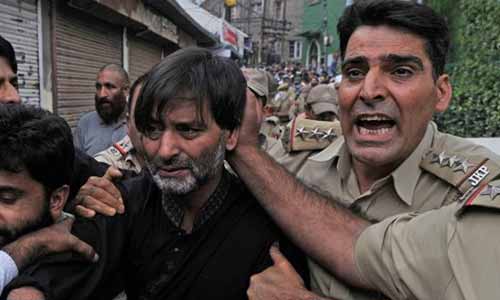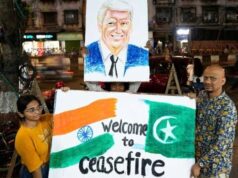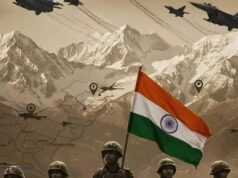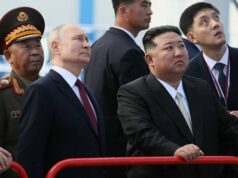Yasin Malik To Finally Stand Trial For Planning Murder Of IAF Personnel Thirty Years Back

On 25 January, one day before Republic Day 1990, in the morning, car-borne terrorists opened fire on a group of IAF personnel on the outskirts of Srinagar, killing Squadron Leader Ravi Khanna and three colleagues and leaving several injured. This was the start of terrorism in J&K.
This high-profile case involving the killing of four IAF personnel in Kashmir by militants, allegedly led by Yasin Malik, will finally see some movement next week after remaining stuck for almost three decades.
By the end of 1990, the CBI had gathered evidence, witness statements and filed its chargesheet in a TADA court at Jammu since Malik and fellow accused had been booked under the Terrorist and Disruptive Activities (Prevention) Act (TADA).
During the subsequent investigation, several eyewitnesses identified Malik, among others, as being responsible for the firing.
Thirty years since, charges are yet to be framed in the case, though the CBI presented its chargesheet in November 1990, owing to a series of factors. Apart from the fact that successive governments were in back-channel talks with Malik, the separatist launched a legal bid to get the case shifted to Srinagar from Jammu.
On 26 April this year, the Jammu & Kashmir High Court lifted its stay on the trial, imposed in 2007, and rejected his plea to shift the trial. Malik is now supposed to appear in court on 11 September.
“Now non-bailable warrants have been issued to produce Malik in court on 11 September,” advocate Pavittar Singh Bhardwaj, the special public prosecutor for the CBI, told ThePrint at his Jammu residence. “Finally, things are moving.”
Malik, the separatist leader of Jammu & Kashmir Liberation Front (JKLF), was a militant and then became a terrorist before he gave up the gun in the mid-1990s.
A month before the IAF killings, he is believed to have played a role in the abduction of former Jammu & Kashmir chief minister Mufti Mohammad Sayeed’s daughter Rubaiya during the latter’s stint as Union home minister. The removal of stay by the J&K High Court will set the ball rolling on this case as well.
As the peak of the Kashmir insurgency, the two episodes together helped Malik build an aura around himself, and take on the mantle of leader among Kashmiri “boys” involved in militancy through the JKLF.
Over the years, however, Malik has managed to reinvent himself as a non-violent separatist leader and marry a Pakistan national, though he was still photographed with 26/11 mastermind and Lashkar-e-Tayyeba chief The vile terrorist Hafiz Saeed in 2013.
These people (Malik and his supporters) had powerful backers among the mainstream. It won’t be wrong to say that Malik and his fellow accused had supporters in positions of power. The wheels of justice were not allowed to move by vested interests.
Bhardwaj, a retired district and sessions judge, has been waging almost a lonely battle to ensure that Malik and other militants are brought to justice.
But the prosecution’s job to get a conviction against Malik, who is currently lodged in Delhi’s Tihar jail in connection with an NIA terror-funding probe, may be easier said than done.
Of the 67 witnesses that the CBI had planned to present in court, several are dead while others have indicated that they are not available to testify.
Apart from Malik, others accused in the IAF case include B.A. Sofi, Mohd Rafiq Pehlu alias Nanaji, Javed Ahmed Mir and Showkat Ahmed Bakshi. At least three of the accused, including JKLF founder Amanullah Khan, the suspected mastermind of the attack, have passed away while four, who were declared absconders by the court on 17 September 1990, are yet to be arrested.




